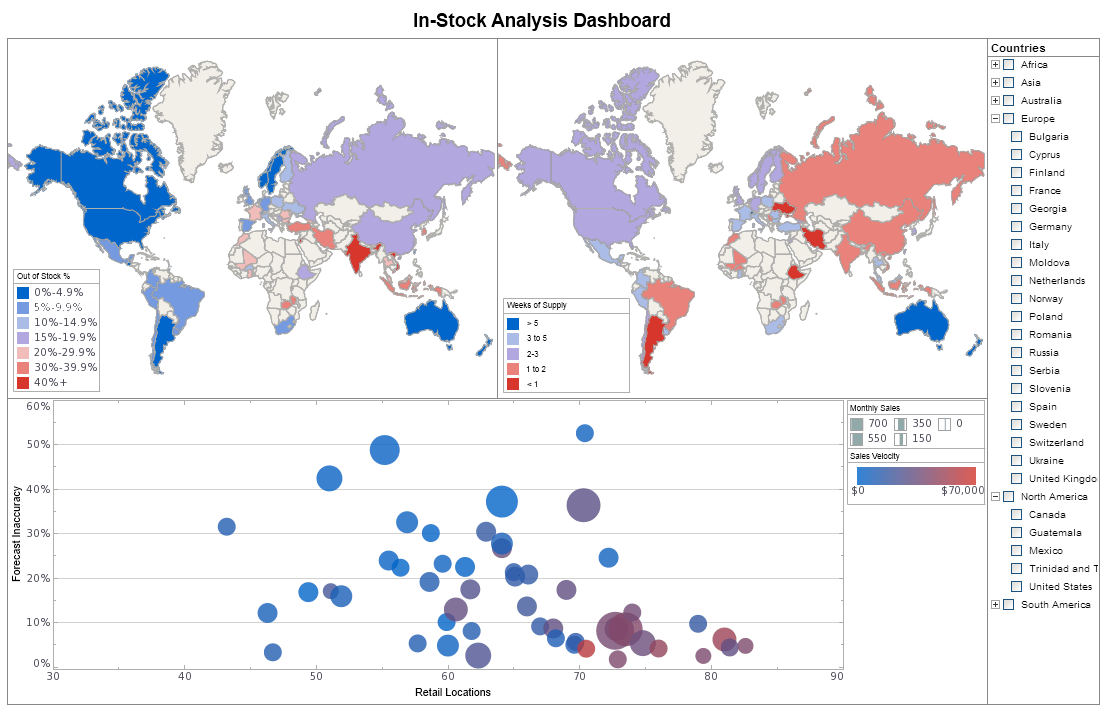InetSoft Webcast: Where Reports Get Deployed
This is the continuation of the transcript of a Webcast hosted by InetSoft on the topic of "Business Intelligence Today." The speaker is Mark Flaherty, CMO at InetSoft.
I would categorize most of the data-intensive industries as having a lot of interest in being able to get information in the hands of end-users. Many organizations are really swimming, and perhaps even drowning, in data. To get your hands around the information, to get your arms and really be able to take impact to how good business decisions are made in a boardroom, in a room that’s outside of the usual analytics that happen where reports get deployed or dashboards get shown and really dig into the insights of how good decisions can get made are certainly where we are seeing a number of industries take form.
So examples of this include retailers are actually using this for point-of-sale information. We are seeing this in utilities, for instance, for the Smart Grid that’s emerging and the ability to get information correlated in terms of real-time events that are happening in the Smart Grid where it would be profile or usage information and getting that tied to billing data that exists within the utility’s organization. And so these are many of the industries that we are seeing that continue to adopt and use StyleBI, and a lot of the pervasive BI tools that are continuing to exist in this market.
| #1 Ranking: Read how InetSoft was rated #1 for user adoption in G2's user survey-based index | Read More |
Data mashup is absolutely the future for business intelligence for multiple reasons. One of the reasons is that this is one of the most important ways to make business intelligence agile. Traditional BI technologies that are mostly based on relational or multidimensional databases can be very powerful. There is no question about it, but they are not really flexible. Every time you want to change something, every time you want to ask a new kind of a “what if” question, you need to make a lot of changes. With data mashup, it’s much simpler than that. You change something, you ask a question and you get an instance answer.
The second part of agile BI is giving point and click interfaces. Again, I think it’s absolutely one of the biggest trends in business intelligence, that all of the traditional point and click graphical user interfaces - again they are great for specific used cases. But for an average casual user, they still require a lot of training and a lot of thought of how to translate that business question that you have in your mind into these facts and dimensions on the screen. But nobody needs to be trained in Google, you just type and you get the answer to your question.
Unless you have very user-friendly and very flexible and agile technologies, you can’t really roll out business intelligence to mass populations of your end-users - maybe some strategic decision makers but not your operational decision makers. You need something much simpler and much more reactive to constantly changing business conditions.
 |
Read the top 10 reasons for selecting InetSoft as your BI partner. |
The best practice number 1 is make sure that your business management understands the value of BI. That is step number 1 because I still talk to certain amount of clients that are kind of on the fence whether BI should be front and center of their agenda. If it’s not, it absolutely should be. So that’s step number 1. Number 2, get your data governance in order, the house of data governance in order, because without understanding your data, without understanding what it is that you are analyzing, and that’s not a technology issue, it’s a business ownership issue, you can’t really have an effective business intelligence. And once you are past those two, obviously look for all of the modern, flexible, agile, powerful BI technologies.
| Previous: The Growing Imperative Behind Business Intelligence |
